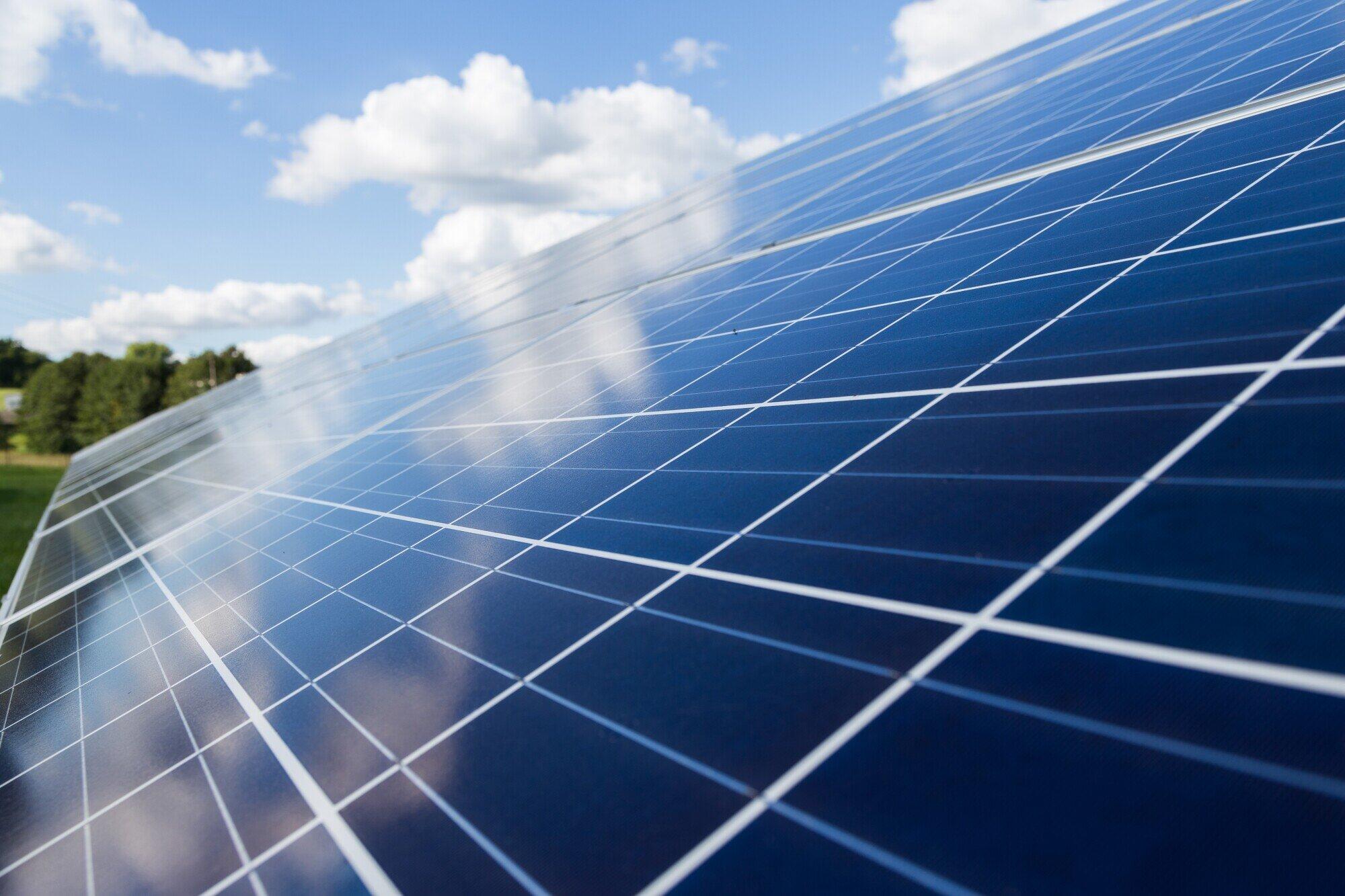In an era where sustainability and self-sufficiency are becoming increasingly important, building an off-grid solar system has emerged as a paramount solution for those looking to reduce their carbon footprint and achieve energy independence.
This comprehensive guide is designed to walk you through the essential steps of creating a solar setup that not only powers your needs but also aligns with your environmental values.
In this blog post, we’ll explore the ten ultimate guides to designing, installing, and maintaining an off grid solar system that suits your specific energy needs.
Understanding Solar Power Basics
Before jumping into solar, a fundamental understanding of how solar power systems work is crucial. This section will demystify solar panels, inverters, and batteries, setting the groundwork for more complex considerations. We’ll also discuss the different types of solar systems, such as:
Grid-Tied
Systems connected to the public utility grid, use solar power as the main energy source but can also draw from the grid when needed. These systems are popular for homeowners looking to reduce their electricity bills. They don’t provide backup power during outages.
Off-Grid
As the name suggests, off-grid systems operate independently from the public utility grid. They rely solely on solar power and require batteries for energy storage. These systems are typically used in remote areas or for those wanting complete energy independence.
Hybrid
A hybrid system combines elements of both grid-tied and off-grid systems. It can draw power from both the solar panels and the grid, making it a flexible option for those who want some level of backup power. This system is also able to sell excess energy back to the grid.
This allows homeowners to earn money from their solar investment. This system is also able to switch to off-grid mode during power outages, providing a backup source of energy.
Monitoring Systems
Many modern solar systems come equipped with monitoring systems that allow homeowners to track their energy production and usage in real time. This can help identify any issues or inefficiencies in the system and make adjustments as needed. It also allows for better understanding and management of energy usage.
Micro-Inverter
Microinverters are a newer technology that has gained popularity in recent years. They work by attaching to individual solar panels and converting the DC electricity directly into AC electricity. This eliminates the need for a string inverter and can lead to even higher efficiency levels.
String Inverter
A string inverter, on the other hand, works by converting the DC electricity from multiple solar panels into AC electricity. This type of inverter is typically used in larger systems and can lead to higher overall efficiency.
Battery Storage
One common issue with solar power is that it is only available when the sun is shining. However, battery storage systems have become increasingly popular as a solution to this problem. These systems allow excess energy produced during sunny hours to be stored for later use, providing a more consistent source of renewable energy.
Net Metering
Net metering refers to the process of selling excess energy produced by a solar system back to the grid. This allows homeowners to offset their energy costs and even make a profit by providing clean, renewable energy to others.
Many states have net metering policies in place, making solar power an even more attractive option for homeowners.
Solar Incentives
In addition to the cost savings and environmental benefits, there are also many financial incentives for switching to solar power. These can include:
Federal Tax Credit
Homeowners can receive a solar tax credit worth 26% of the cost of their solar system, reducing their overall tax liability. This credit will decrease to 22% in 2021 and then expire at the end of that year, so now is a great time to take advantage of this opportunity.
State and Local Incentives
Many states also offer incentives for solar power, such as solar rebates or tax credits. Check with your state’s energy office to see what options are available in your area. Additionally, some local governments offer property tax exemptions for installing solar panels.
Solar Renewable Energy Certificates
SRECs are tradable certificates that represent the environmental benefits of solar energy. Homeowners can sell these certificates on the market to utility companies, providing an additional source of income for their solar system.
Local Utility Company Incentives
By taking advantage of these programs, homeowners can significantly reduce the upfront costs of installing a solar system. It’s important to research and understand the specific incentives offered by your local utility company, as they can vary greatly.
Solar Panel Maintenance
Proper maintenance of solar panels is essential for ensuring optimal performance and longevity. This can include regular cleaning, monitoring for any damage or malfunctions, and making necessary repairs as needed. Here are ways to effectively maintain your solar panel system:
Keep Panels Clean
Dirt, dust, and debris can accumulate on solar panels, reducing their efficiency. It’s important to regularly clean the panels with a gentle soap and water solution.
Monitor for Damage
Regularly inspect your solar panels for any damage or malfunctions. This could include cracked or broken panels, loose connections, or faulty wiring.
Make Necessary Repairs
If you notice any issues with your solar panel system, it’s important to address them promptly by making necessary repairs. This will help ensure that your system is operating at its full potential.
In addition to regular maintenance, homeowners should also be aware of the warranty coverage for their solar panel system. Most manufacturers offer a
Assessing Your Energy Needs
Tailoring your system to your energy consumption is key. Learn how to calculate your daily energy usage and what this means for your off-grid system’s design. This involves analyzing your monthly energy bills to determine how much electricity you use on average.
Understanding this data will help you determine the size and output of your solar panels, as well as the capacity of your battery storage. This information will also give you a better idea of how many panels and batteries you’ll need to achieve energy independence.
Installation Options
When it comes to installing solar panels, there are a few different options available. The most common is rooftop installation, where the panels are mounted on top of your home or building. This is typically the easiest and most cost-effective option, as it utilizes existing space and does not require additional land.
However, if you have limited roof space or live in an area with significant shade, ground-mounted installations may be a better choice. These involve mounting the panels on poles or racks in an open area on your property.
While this can be more expensive and may require additional permits and zoning approvals, it allows for optimal placement of the panels to capture maximum sunlight. If you do not have suitable space on your property, community solar projects are becoming
Available Space
The size and layout of your property will also play a role in determining the design of your solar system. If you have limited space, you may need to opt for smaller panels or a ground-mounted system instead of a roof-mounted one.
On the other hand, if you have plenty of space available, you can choose larger panels and potentially generate more energy. It’s important to work with a professional installer who can assess your property and recommend the best design for your specific needs.
In addition, it’s also important to consider future space availability. If you plan on expanding or renovating your property shortly, this may impact where you can install solar panels. It’s always a good idea to plan and leave room for potential changes in the future.
Energy Usage
Another important factor to consider is your household’s energy usage. This will help determine how large of a system you’ll need to meet your electricity needs. Factors such as:
- the number of people in your household
- their daily habits
- the types of appliances and electronics used
These all play a role in determining energy consumption. By understanding your energy usage patterns, you can better design a solar system that will meet your specific needs.
Budget
Of course, budget is also an essential consideration when designing a solar setup. The cost of solar panels and installation can vary greatly depending on factors such as the size of the system, location, and type of panels used.
It’s important to set a realistic budget and work with your installer to determine the best options for your specific needs.
System Sizing Fundamentals
This part of the guide will cover how to size your system correctly, ensuring you have enough power for your needs without overspending on unnecessary components. Here are the basic steps to follow:
Choose Your Panel Type
There are several types of solar panels available, including monocrystalline, polycrystalline, and thin-film. Each type has its advantages and disadvantages in terms of efficiency, cost, and durability. It’s important to research and compare different
Consider Future Changes
Think about any potential changes in your energy usage shortly, such as adding new appliances or expanding your household. This will impact your energy needs and may require you to adjust the size of your solar panel system. It’s always better to plan and ensure that your solar power system can accommodate any future changes.
Choose a Reputable Installer
Installing a solar panel system is not a DIY project. It requires specialized knowledge, skills, and equipment to ensure proper installation and function. When choosing an installer, make sure they are reputable and experienced. Look for certifications and customer reviews to ensure you’re working with a reliable company.
Make sure to read about residential solar panel installers. This will give you an idea of what to expect during the installation process and what questions to ask potential installers. It’s also a good idea to get quotes from multiple companies to compare prices and services.
Financing Options
Solar panel systems can be costly upfront, but the long-term savings on your energy bills make it a worthwhile investment. However, if you can’t afford the initial cost, there are financing options available such as solar loans, leases, or power purchase agreements (PPAs).
These allow you to pay for your solar panel system over time while still reaping the benefits of renewable energy.
Calculate Your Peak Usage
Identify when you use the most energy during the day and determine how much power you need during that period. This will help you determine the size and type of solar panel system that can meet your peak energy needs.
You can also consult with a professional installer to accurately calculate your peak usage and recommend the right system for your household.
Consider Your Roof’s Condition
Your roof is the primary location for installing solar panels. Make sure it is in good condition before proceeding with installation. If your roof is old or damaged, it may not be able to support the weight of solar panels or could require roof repairs before installation can take place.
It’s important to address any roofing issues beforehand to ensure a smooth and successful installation process.
Understand Local Regulations
Before installing a solar panel system, it’s important to research local regulations and permits. Each state and municipality may have a specific process for obtaining permits and approvals for solar panel installation.
It’s also important to understand any restrictions or guidelines that may be in place. For example, some areas may have limitations on the size or placement of solar panels, so it’s important to follow these regulations to avoid any issues.
Explore the Ultimate Guide to Building an off Grid Solar System Today
Building an off grid solar system is a rewarding project that not only promotes sustainability but also empowers you with energy independence. By following these ten guides, you’ll be well on your way to understanding, designing, and operating a solar power system tailored to your personal or familial needs.
Remember, every step you take towards off-grid living is a step towards a more sustainable future for all. So, what are you waiting for? Let’s dive into the final section and make your off-grid dreams a reality!
Did you find this article helpful? Check out the rest of our blogs!




Be First to Comment